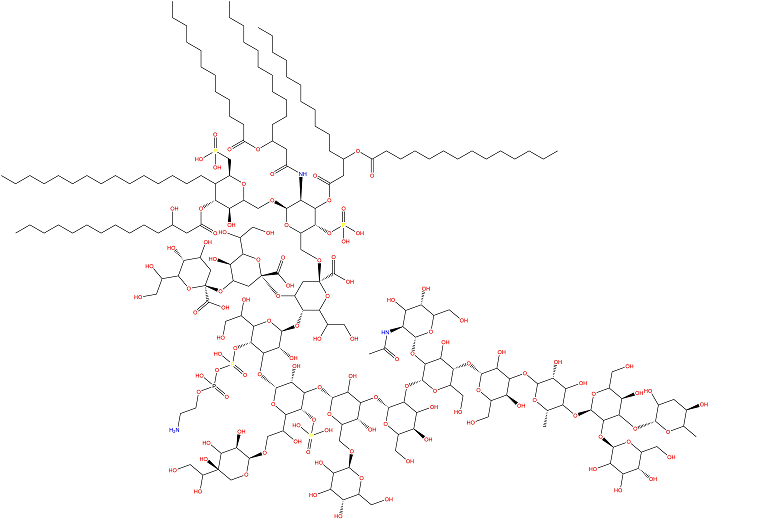Lipopolysaccharides
| Code | Size | Price |
|---|
| TAR-T11855-1mg | 1mg | £144.00 | |||||||||||||||||||||||||||||||||||||||||||||||||||||||||||||||||||||||||||||||||||||||||||||||||
| Special offer! Add £1 to your order to get a TargetMol CCK-8 Kit. Read more here. | |||||||||||||||||||||||||||||||||||||||||||||||||||||||||||||||||||||||||||||||||||||||||||||||||||
Quantity:
| TAR-T11855-5mg | 5mg | £230.00 | |||||||||||||||||||||||||||||||||||||||||||||||||||||||||||||||||||||||||||||||||||||||||||||||||
| Special offer! Add £1 to your order to get a TargetMol CCK-8 Kit. Read more here. | |||||||||||||||||||||||||||||||||||||||||||||||||||||||||||||||||||||||||||||||||||||||||||||||||||
Quantity:
| TAR-T11855-10mg | 10mg | £310.00 | |||||||||||||||||||||||||||||||||||||||||||||||||||||||||||||||||||||||||||||||||||||||||||||||||
| Special offer! Add £1 to your order to get a TargetMol CCK-8 Kit. Read more here. | |||||||||||||||||||||||||||||||||||||||||||||||||||||||||||||||||||||||||||||||||||||||||||||||||||
Quantity:
| TAR-T11855-25mg | 25mg | £624.00 | |||||||||||||||||||||||||||||||||||||||||||||||||||||||||||||||||||||||||||||||||||||||||||||||||
| Special offer! Add £1 to your order to get a TargetMol CCK-8 Kit. Read more here. | |||||||||||||||||||||||||||||||||||||||||||||||||||||||||||||||||||||||||||||||||||||||||||||||||||
Quantity:
| TAR-T11855-50mg | 50mg | £997.00 | |||||||||||||||||||||||||||||||||||||||||||||||||||||||||||||||||||||||||||||||||||||||||||||||||
| Special offer! Add £1 to your order to get a TargetMol CCK-8 Kit. Read more here. | |||||||||||||||||||||||||||||||||||||||||||||||||||||||||||||||||||||||||||||||||||||||||||||||||||
Quantity:
| TAR-T11855-100mg | 100mg | £1,649.00 | |||||||||||||||||||||||||||||||||||||||||||||||||||||||||||||||||||||||||||||||||||||||||||||||||
| Special offer! Add £1 to your order to get a TargetMol CCK-8 Kit. Read more here. | |||||||||||||||||||||||||||||||||||||||||||||||||||||||||||||||||||||||||||||||||||||||||||||||||||
Quantity:
Prices exclude any Taxes / VAT
Overview
Regulatory Status: RUO
Shipping:
cool pack
Storage:
-20℃
Images
Documents
Further Information
Bioactivity:
Lipopolysaccharide is a highly immunogenic antigen which can enhance immune responses.Lipopolysaccharides is an endotoxin derived from the outer leaflet of the outer membrane of Gram-negative bacteria. Lipopolysaccharide consists of an antigen O-specific chain, a core oligosaccharide and lipid A.
Biological Applications:
LPS is one of the most effective activators of the mammalian immune system without toxicological effects. However, as a nonspecific immunogen, when entering the microcirculation, LPS interacts with effector cells, activates the immune cells of the body, (e.g., monocytes, B-lymphocytes, macrophages, etc.) and stimulates the secretion of tumor necrosis factor-alpha (TNF-α), interleukin-1 (IL-1), interleukin-2 (IL-2), interleukin-6 (IL-6), thromboxane A2 (TXA2), reactive oxygen species (ROS), nitric oxide (NO), and other biologically active molecules. This can lead to clinical syndromes such as fever, diarrhea, systemic inflammation response, coagulation dysfunction, multiple organ failure, and even shock.
LPS is commonly extracted for the study of its structure, biosynthetic pathways, metabolism, toxicologic pathophysiology, immune responses, and is used in various life science research including the induction of growth-promoting factors (e.g., the synthesis and secretion of interleukins), and the induction of disease in animal models (e.g., meningitis, sepsis, gastrointestinal infections, acute lung injury, and other inflammatory reactions).
CAS:
T11855
Description:
Lipopolysaccharide is a highly immunogenic antigen which can enhance immune responses. Lipopolysaccharides is an endotoxin derived from the outer leaflet of the outer membrane of Gram-negative bacteria. Lipopolysaccharide consists of an antigen O-specific chain, a core oligosaccharide and lipid A.
Formula:
C205H366N3O117P5
Mechanism of Action:
LPS can initiate a cascade of immune stimuli and toxic pathophysiological activities in the body, including the release of endotoxins that can cause septic shock. When bacteria invade the human body, they release their LPS on the cell surface. Initially, LPS binds to lipopolysaccharide-binding protein (LBP), which transports LPS to the membrane surface of immune cells, where it interacts with the membrane protein CD14. Subsequently, CD14 transports LPS to Toll-like receptor 4 (TLR4) and myeloid differentiation protein-2 (MD2), forming a protein complex that activates the expression of downstream cytokines and triggers an immune-inflammatory response.
Molecular Weight:
4899.92
Purity:
0.98
Research Area:
Inflammatory; Metabolism; Toxicity Pathophysiology; Immune Response
SMILES:
CCCCCCCCCCCCCCCC1[C@H](OC([C@H]([C@@H]1OC(=O)CC(CCCCCCCCCCC)O)O)CO[C@H]2[C@H](C([C@@H](C(O2)CO[C@@]3(CC([C@H](C(O3)C(CO)O)O[C@H]4[C@@H](C([C@@H](C(O4)C(CO)O)OP(=O)(O)OP(=O)(O)OCCN)O[C@@H]5[C@@H](C([C@@H](C(O5)C(CO[C@@H]6[C@@H](C([C@](CO6)(C(CO)O)O)O)O)O)OP(=O)(O)O)O[C@@H]7C(C([C@@H](C(O7)CO[C@@H]8C(C([C@H](C(O8)CO)O)O)O)O)O[C@@H]9C(C([C@H](C(O9)CO)O)O)O[C@@H]1C(C([C@@H](C(O1)CO)O[C@@H]1C(C([C@H](C(O1)CO)O)OC1[C@@H](C(C([C@@H](O1)C)O[C@@H]1C(C([C@@H](C(O1)CO)O)O[C@@H]1C(C[C@H](C(O1)C)O)O)O[C@@H]1C(C([C@H](C(O1)CO)O)O)O)O)O)O)O)O[C@@H]1[C@H](C([C@@H](C(O1)CO)O)O)NC(=O)C)O)O)O)O[C@@]1(CC([C@H](C(O1)C(CO)O)O)O[C@@]1(CC([C@H](C(O1)C(CO)O)O)O)C(=O)O)C(=O)O)C(=O)O)OP(=O)(O)O)OC(=O)CC(CCCCCCCCCCC)OC(=O)CCCCCCCCCCCCC)NC(=O)CC(CCCCCCCCCCC)OC(=O)CCCCCCCCCCC)CP(=O)(O)O
References
1. Rietschel ET, et al. Bacterial endotoxin: molecular relationships of structure to activity and function. FASEB J. 1994 Feb;8(2):217-25.
2. Kabanov DS, et al. Structural analysis of lipopolysaccharides from Gram-negative bacteria. Biochemistry (Mosc). 2010 Apr;75(4):383-404.
3. Heinrichs DE, et al. Molecular basis for structural diversity in the core regions of the lipopolysaccharides of Escherichia coli and Salmonella enterica. Mol Microbiol. 1998 Oct;30(2):221-32.
4. Kajiwara Y, et al. A critical role for human caspase-4 in endotoxin sensitivity. J Immunol. 2014 Jul 1;193(1):335-43.
5. Lai HT, et al. Effects of repeated intratracheally administered lipopolysaccharide on primary and secondary specific antibody responses and on body weight gain of broilers. Poult Sci. 2011 Feb;90(2):337-51.



